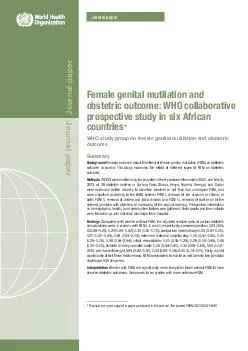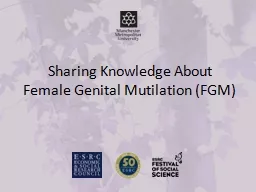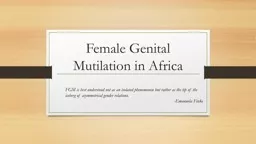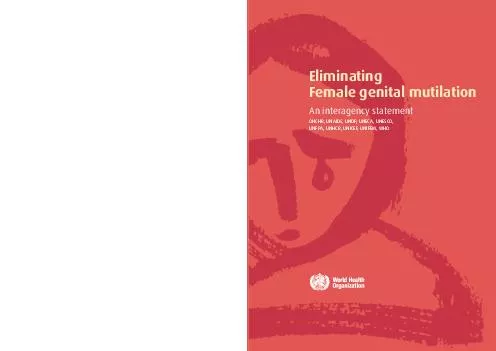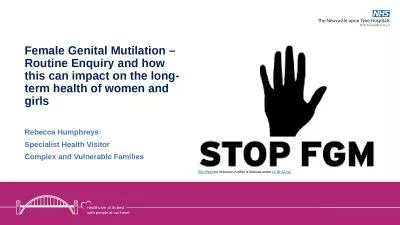PDF-Female genital mutilation and obstetric outcome WHO collaborative prospective study in
Author : lois-ondreau | Published Date : 2014-11-27
This study examines the effect of different types of FGM on obstetric outcome Methods 28 393 women attending for singleton delivery between November 2001 and March
Presentation Embed Code
Download Presentation
Download Presentation The PPT/PDF document "Female genital mutilation and obstetric ..." is the property of its rightful owner. Permission is granted to download and print the materials on this website for personal, non-commercial use only, and to display it on your personal computer provided you do not modify the materials and that you retain all copyright notices contained in the materials. By downloading content from our website, you accept the terms of this agreement.
Female genital mutilation and obstetric outcome WHO collaborative prospective study in: Transcript
Download Rules Of Document
"Female genital mutilation and obstetric outcome WHO collaborative prospective study in"The content belongs to its owner. You may download and print it for personal use, without modification, and keep all copyright notices. By downloading, you agree to these terms.
Related Documents

